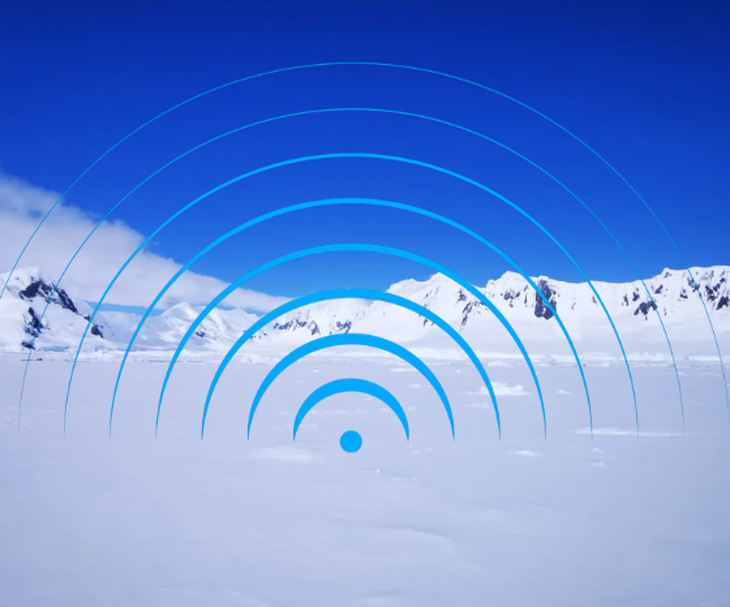
The radio pulses come from a 30-degree angle below the ice surface, meaning they have to pass through thousands of kilometers of rock and soil before reaching airborne equipment - Photo: AI
According to Space, these strange radio signals were recorded by the ANITA detector starting in March this year.
ANITA (Antarctic Impulsive Transient Antenna) is a series of machines suspended from giant balloons in Antarctica, designed to detect extremely high-energy neutrinos from space. But recently, ANITA has recorded signals unlike anything seen before.
The radio pulses came from 30 degrees below the ice surface, meaning they had to pass through thousands of kilometers of rock and soil before reaching the airborne equipment. According to current particle physics theory, such signals should have been absorbed and would not have survived to a measurable level.
"This is an interesting problem, because until now we have not been able to explain what these anomalies are," said Dr. Stephanie Wissel, a member of the research team from Penn State University (USA).
One hypothesis put forward by scientists is that neutrinos, known as "ghost particles" due to their almost non-interacting nature with matter, pass through our bodies by the billions every second without leaving a trace.
But because of that, detecting neutrinos is extremely difficult, and if the signal is caught, it is a window into extremely powerful events in the universe.
However, in this case, the research team believes that the strange signals are most likely not neutrinos, because the angle of arrival is too large and there is a lack of compatibility with data from other observatories such as IceCube or the Pierre Auger Observatory.
ANITA was designed to “hunt” for neutrino collisions with ice, creating a chain reaction that creates a “particle storm” that can be detected via radio waves. But with the new signals, the angle of arrival of the waves was so steep that it was impossible to trace the source.
Scientists have therefore proposed a new hypothesis that this is a sign of a new type of particle, or a previously unknown particle interaction. This could be the first clue to dark matter, a type of matter that makes up 85% of the mass of the universe but is so far completely invisible to human devices.
The team is now pinning its hopes on PUEO, the more sensitive successor to ANITA that is being developed at Penn State. “Hopefully when we fly PUEO, we’ll catch more anomalies, and this time we’ll be able to understand what they really are,” Dr. Wissel said.
Source: https://tuoitre.vn/phat-hien-tin-hieu-vo-tuyen-bi-an-o-nam-cuc-gioi-khoa-hoc-boi-roi-20250618110951207.htm


































































































Comment (0)